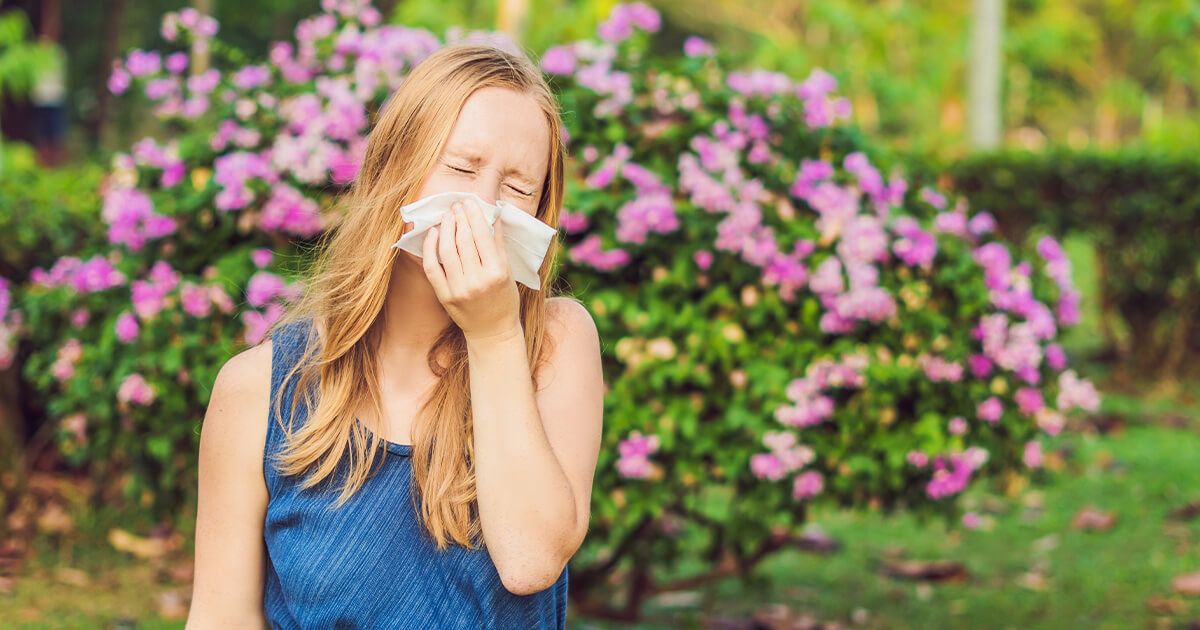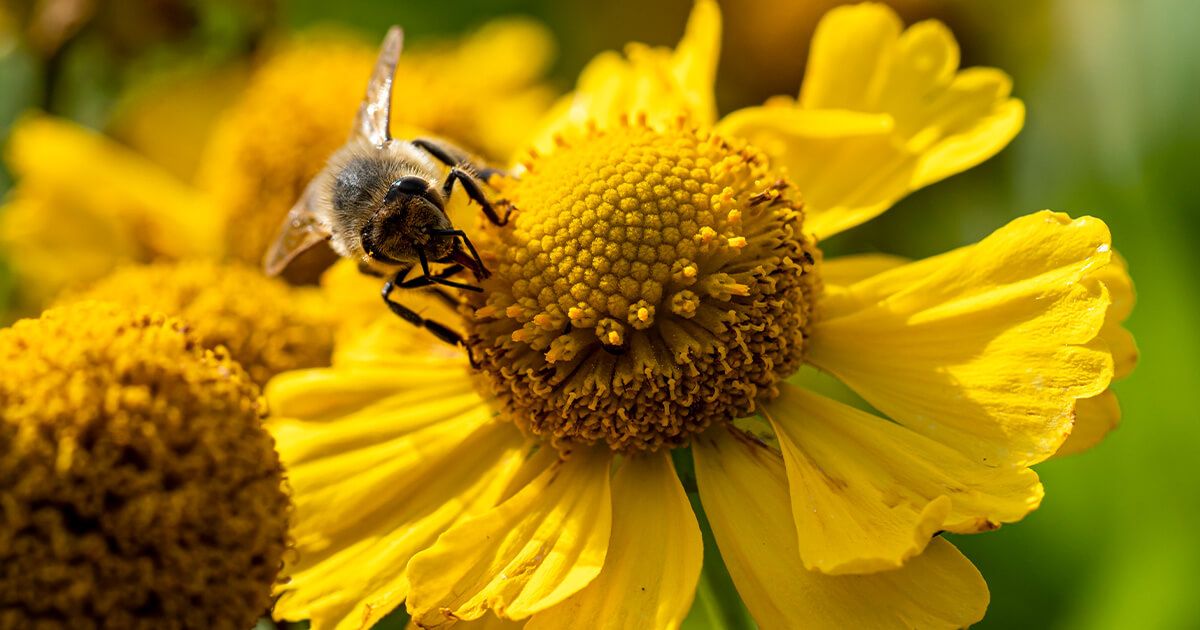Blog
Seasonal Allergies: Managing & Preventing Symptoms

Everyone looks forward to the spring. There’s the promise of flowers blooming and blossoming trees, sunnier days, and warmer temperatures.
However, for millions of people plagued by allergies, it also means that symptoms like sneezing, congestion, and other discomforts are on the horizon.
According to the Canadian Society of Allergy and Clinical Immunology, about one-quarter of Canadians suffer from seasonal allergies. These include common symptoms like sneezing, itchy nose and throat, nasal congestion, a runny rose, and coughing, as well as watery, itchy, and reddened eyes.
Rather than simply leaving yourself to a sniffly fate, you can tackle the symptoms and improve your quality of life. In this article, we’re going to explore straightforward strategies to help manage your seasonal allergies effectively.
Did You Know? Important News for Allergy Sufferers in Ontario
Pharmacists at Cook's Pharmacy can now prescribe allergy medication right in-store. Get allergy relief quickly and easily without needing a separate prescription. Visit Cook's Pharmacy today for all your allergy medication needs.
Reach out to Cook's Pharmacy for your allergy medication now.
For more information on this change, visit the Ontario Newsroom and Ontario.ca.
Reduce Exposure to Allergy Triggers
There are several things you can do to help minimize the exposure to allergens while also alleviating symptoms. Here are some of our top tips for keeping your symptoms at bay:
Staying indoors during dry, windy days, instead opting to go outside after the rainfall clears up pollen from the air.
Avoiding activities such as mowing the lawn and weed-pulling that can pull up allergens.
When coming indoors, make sure to remove your outdoor clothes and shower to wash away pollen from your skin and hair.
Try to avoid hanging your laundry outside because pollen has a tendency to cling onto fabrics.
Consider wearing a face mask during outdoor chores.
While these tips can’t completely prevent allergies, they can help manage symptoms and ease your general springtime sniffling and itchiness.
Take Precautions During High Pollen Counts
As annoying as it might be to have to take pre-emptive measures to avoid allergies, it can be greatly beneficial to take additional steps to stop symptoms before they start.
Here are some essential tips to get yourself started to alleviate your allergies:
Make sure you’re monitoring pollen forecasts (as mentioned) through local news media and other online resources.
Pre-emptively take medication as needed to stop symptoms before they start.
Monitor pollen forecasts through local media such as the news or other online sources.
Close doors and windows during peak pollen times, particularly at night.
Minimize outdoor activities, especially in the early morning when pollen levels tend to be highest.
Keep the Air Indoors Clean
It can be hard to eliminate allergens indoors, but making an effort can do a lot to help you mitigate and manage symptoms.
It does take some additional work, but if you follow these tips, you should be able to help ease your allergy woes:
Use the air conditioning in your home and car.
If you have central air, use high-efficiency filters and make sure you keep up with regular maintenance measures.
Keep indoor humidity levels in tandem with a dehumidifier.
Utilize a portable HEPA filter – especially in your bedroom. There’s no sense in suffering while you sleep.
Make sure to vacuum your floors using a HEPA-filtered vacuum cleaner.
Try Over-the-counter Remedies
Cook’s Pharmacy has everything you need to help manage your allergy symptoms, so it only makes sense we recommend using some over-the-counter remedies! However, it’s important to keep in mind that you always consult with a healthcare provider before you begin starting new medications, especially if you take other prescriptions. Recommendations are not a replacement for medical advice.
Having said that, here are some over-the-counter medicines you can consider using:
Try oral antihistamines like cetirizine, fexofenadine, and loratadine to target sneezing, itching, and nasal congestion.
Try corticosteroid nasal sprays such as fluticasone and budesonide to address nasal symptoms.
Try cromolyn sodium nasal spray to mitigate springtime allergy symptoms by blocking immune system agents.
Try oral decongestants like pseudoephedrine to provide temporary relief from nasal congestion.
Sinus Rinsing – a Different Approach to Decongestion
Sinus rinsing, also referred to as nasal irrigation or nasal flushing, is a process used to clear the nasal passages of mucus, allergens, and irritants. The process involves flushing out your nasal cavities with a saline/saltwater solution to help clear out congestion, reduce inflammation, and improve your overall breathing. Here's how the process typically goes:
Preparation
Pharmacies often have saline solution kits available for purchase, but in case you can't find it, you can mix your saline solution by mixing purified or distilled water with salt and baking soda. You must use clean water to avoid possibly introducing bacteria or other contaminants into your nasal passages.
Application
Typically, you pour the saline solution directly into your nostrils from a container or administer it using a nasal irrigation device like a neti pot or bulb syringe. You tilt your head to the side over the sink and gently pour the solution into one nostril while breathing through the mouth (avoid swallowing while doing this).
Rinsing
After you apply the saline solution, it's important for you to blow your nose gently to expel any remaining solution, mucus, and loosened debris from your nose. Consider Alternative Treatments
Sinus rinsing can be beneficial for various conditions, such as:
Sinusitis
Sinus rinsing can clear blocked-up sinuses and reduce inflammation that comes with sinus infections.
Allergies
Sinus rinsing can flush out several allergens, such as pollen, dust, and pet dander, which can relieve allergy symptoms such as congestion and irritation.
Rhinitis
Sinus rinsing can alleviate symptoms of both allergic/non-allergic rhinitis (inflammation and swelling of the mucous membrane of the nose) by removing irritants from the nasal passage.
Nasal Congestion
Sinus rinsing can provide temporary relief from nasal congestion caused by colds, flu, or other respiratory infections.
Typical Causes of Springtime Allergies
Allergies typically occur when an individual's immune system deems certain proteins known as allergens as germs or foreign bodies. Having said that, developing an allergy and then experiencing an allergy attack is a two-step process. The first is when the body experiences the allergy for the first time and creates the antibodies that attach to specific cells.
This process is often referred to as "sensitization", which is the priming process for an allergy attack to follow upon encountering the allergen again. This causes the cells to release histamines, a substance that causes the typical unpleasant symptoms associated with allergies. Subsequently, the medicine designed to counteract these symptoms are referred to as “antihistamines” - AKA, allergy medication.
Everyone experiences allergies differently, but there are common causes of spring allergies - such as grass and tree pollen and mold spores.
Let’s break down these common allergens:

Pollen
Pollen plays a big role when it comes to fertilizing several different plant species and is an important part of how ecosystems function. However, it can be the bane of allergy sufferers. While larger, waxy pollen usually found on colourful flowers and spread by bees typically doesn’t trigger much in terms of allergies, the smaller, powdery pollen from trees, grass, and weeds can easily become airborne and impact those with significant allergies.
Although it’s typically trees that contribute to springtime allergies, weeds, and grasses can also cause symptoms, especially in places where spring has arrived early. Grass pollens, such as rye and Bermuda grasses, typically hit their peak in May and June.
Mold
While less obvious than pollen, mold can also trigger springtime allergy symptoms during the springtime season. Mold and mildew tend to release spores to reproduce, which can be dispersed through the air, especially during windy and dry conditions. As well, high humidity, dew, or even fog can help mold spread. These spores can cause symptoms in allergy sufferers, especially if weather conditions continue to facilitate their spread.
When in Doubt, Consult a Healthcare Provider
If you find that any of your efforts aren’t improving your springtime allergies, it’s time to talk to your healthcare provider if you haven’t already. Typically, it’s advisable to consult a healthcare provider, such as your general practitioner, before starting or stopping any treatment or medications. If you find that your symptoms are severe, it is especially important that you visit your family doctor or consult a pharmacist before you start trying any treatments. Remember, online recommendations are not a replacement for medical advice.
However, we can at least prepare you on what to expect when you do make the decision to see a professional:
Allergy testing can be administered to pinpoint specific triggers and help elaborate on what treatment could be right for you.
Allergen immunotherapy such as allergy shots or sublingual tablets could potentially offer long-term relief in the case of severe allergies.
Adjustments made to medications, either switching to new treatments or adjusting prescriptions, could provide relief to allergy sufferers.
You don’t have to suffer silently from seasonal allergies. If you take the time to be proactive about your symptoms, you can get the most out of the springtime without having to sacrifice your quality of life.
The experts at Cook’s Pharmacy can be here to support you through your springtime allergy journey. See our website or pop in for a visit to help get your allergies under control.
Contributors
Latest Posts
Show All Recent Posts
Archive
-
2025
-
July
-
June
-
May
-
April
-
March
-
February
-
January
-
-
2024
-
December
-
November
-
October
-
September
-
August
-
July
-
June
-
May
-
April
-
March
-
February
-
January
-
-
2023
-
December
-
November
-
October
-
September
-
August
-
May
-
April
-
March
-
February
-
January
-
-
2022
-
December
-
November
-
October
-
September
-
August
-
July
-
June
-
May
-
April
-
February
-
